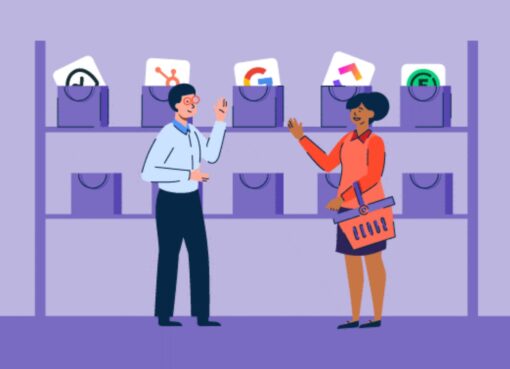Minorities Face Higher Crash Risk in St. Louis: Understanding the Latest Data

Imagine walking or biking the streets of St. Louis. As you make your way, you can’t help but notice the lack of pedestrian infrastructure and wide, high-speed roads.
For many residents, especially in minority communities, this scenario is a daily reality. This puts them at a disproportionately higher risk of being involved in a traffic crash. The 2023 St. Louis City & County Crash Report statistics are alarming.
In the city, a staggering 86% of pedestrian fatalities and 61% of vehicular fatalities occurred in predominantly Black and minority areas. The situation is equally concerning in St. Louis County, where 54% of pedestrian fatalities and 50% of vehicular fatalities took place in these communities.
So, what’s contributing to this disproportionate impact?
The answer lies in inadequate infrastructure, socio-economic disparities, and policy and enforcement issues. In this blog post, we’ll explore the data and understand why this disparity exists.
Breaking Down the Disparity
The report doesn’t mince words. Black and Hispanic drivers, cyclists, and pedestrians are disproportionately affected by crashes in St. Louis.
The numbers paint a stark picture – the risks are higher for minority communities across the board. This disparity is not limited to individual choices. Many people in these communities rely more on public transportation and are less likely to own cars.
Sadly, these same communities often have outdated street infrastructure. This means more people from minority backgrounds are walking or cycling in areas where sidewalks may be in poor condition, and street lighting is inadequate. These communities need priority investments to ensure everyone’s safety.
When accidents do happen, the consequences can be particularly severe for those from minority communities. Tackling complex insurance issues or dealing with language barriers can be overwhelming. If you’ve been injured in a car accident, a St. Louis car accident lawyer can advocate for your rights and help you get the support you need.
TorHoerman Law believes that experienced lawyers understand the complexities of car accident cases, especially those involving vulnerable road users or occurring in areas with infrastructure disparities. They can help you navigate insurance claims, fight for rightful compensation, and punish the culpable parties.
Dangerous Roads and Crash Hotspots
The report highlights several high-risk corridors where a disproportionate number of crashes involving pedestrians and cyclists occur, many of which are in or near minority neighborhoods.
Grand Boulevard, for instance, has been the most dangerous corridor for pedestrians in the City of St. Louis for four consecutive years, with 28 crashes involving pedestrians in 2023 alone.
Alarmingly, the report notes that while no pedestrian fatalities occurred on Grand in 2023, a first since 2017, the corridor still poses significant risks.
Similarly, in St. Louis County, Halls Ferry/New Halls Ferry Road emerged as the most hazardous pedestrian corridor, with 14 crashes and two fatalities in 2023. Moreover, five of these crashes, including one fatality, occurred within a 500-foot stretch, highlighting the need for urgent infrastructure improvements in that area.
Speed: A Deadly Factor
One of the leading contributors to the disproportionate impact on minority communities is the prevalence of high-speed roads.
The report reveals that in 2023, 98% of fatal vehicular crashes in St. Louis City occurred on streets with speed limits of 30 mph (48.28 km/h) or higher. In St. Louis County, the figure was equally alarming, with 86% of pedestrian fatalities occurring on roads marked at 35 mph (56.33 km/h) or higher.
These statistics underscore the direct correlation between vehicle speed and the severity of crashes, especially for vulnerable road users like pedestrians and cyclists.
Distracted Driving: A Growing Concern
Another pressing issue highlighted in the report is the role of distracted driving in crashes involving pedestrians and cyclists. In St. Louis City and County, distracted driving involving pedestrians contributed to 47 crashes in 2023.

However, this figure likely represents only a fraction of the actual cases, as distracted driving can often go undetected or unreported. With the recent passage of the “Siddens Bening Hands-Free Law” in Missouri, efforts are underway to combat this dangerous behavior, but enforcement and education remain crucial.
Impact on the Community
The consequences of traffic violence extend far beyond the immediate loss of life or injuries sustained. For minority communities already facing socio-economic challenges, these crashes exacerbate existing burdens.
The human cost is immeasurable, with lives lost and families forever changed. There are also significant economic and social implications. These include healthcare costs, lost productivity, reduced mobility, and fewer life opportunities. In 2023 alone, 28 pedestrians lost their lives in St. Louis County, making it the deadliest year on record for pedestrian fatalities.
Ultimately, traffic violence erodes the quality of life and community cohesion in these neighborhoods, perpetuating a cycle of disadvantage.
Potential Solutions and Way Forward
Addressing the disproportionate impact requires a multifaceted approach. One crucial step is prioritizing the construction of safe pedestrian facilities and traffic-calming measures in high-risk areas. This includes building sidewalks, installing pedestrian islands, narrowing lanes, and redesigning streets for lower speeds to create a more equitable and safer environment.
In the City of St. Louis, 80% of vehicular fatalities occurred on arterial roads in 2023. This highlights the need for such measures on major corridors. Community engagement is also essential, involving residents in planning to understand better and address their needs and concerns.
According to the report, a disproportionate 86% of pedestrian fatalities in the city occurred in predominantly Black and minority areas. By actively engaging these communities, policymakers can foster a sense of ownership and increase the chances of successful implementation.
Additionally, policy changes promoting equitable enforcement of traffic laws and adopting Vision Zero and Complete Streets policies can help create a safer environment for all road users, regardless of race, ethnicity, or socio-economic status.
Commonly Asked Questions
Q1. What Is Vision Zero?
Vision Zero is a global movement that rethinks traffic safety with the goal of eliminating all traffic fatalities and severe injuries. It’s based on the following principles: Traffic deaths are preventable, meaning crashes aren’t “accidents” but the result of system design flaws.
Humans make mistakes, so roads should be designed to be forgiving, as errors are inevitable. Safety should be a top priority, and policies should emphasize safety over factors like traffic flow speed.
Q2. How Can Complete Streets Policies Contribute to Safer Roads?
Complete Streets policies create safer roads for everyone by designing streets with all users in mind, not just cars.

This includes adding sidewalks, bike lanes, and crosswalks, making it safer for pedestrians, cyclists, and drivers to share the road.
Q3. What Role Can Community Organizations Play in Addressing Traffic Violence?
Community groups amplify residents’ voices, advocate for infrastructure improvements, and hold policymakers accountable. They gather data, identify problem areas, propose tailored solutions, raise awareness, educate the public, and collaborate with authorities to implement effective traffic safety measures.
In conclusion, the disparities in crash risks faced by minority communities in St. Louis are concerning and demand urgent attention. Addressing this issue requires a collaborative effort from policymakers, law enforcement, community organizations, and residents.
By prioritizing infrastructure improvements, promoting equitable enforcement, and adopting Vision Zero and Complete Streets policies, we can create a safer environment for all road users, regardless of race, ethnicity, or socio-economic status. Together, we can build a more just and equitable transportation system that protects the lives and well-being of every St. Louisan.



